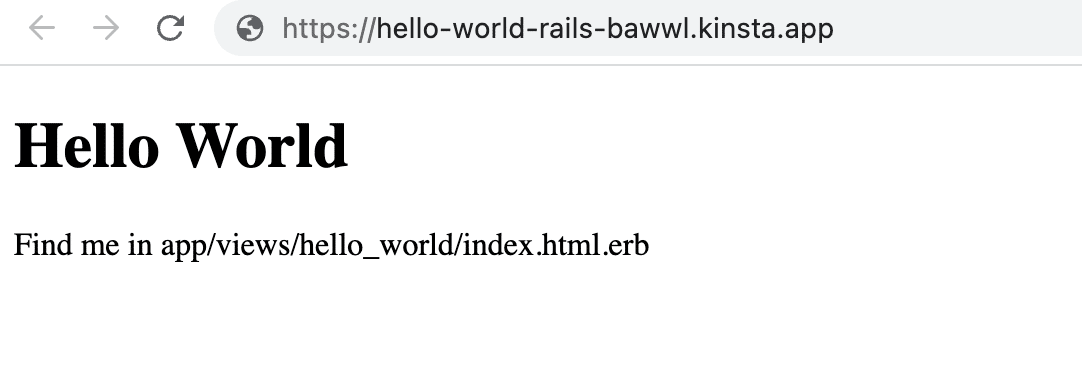This is an example of how to set up a Ruby on Rails application to deploy on Kinsta’s Application Hosting services from a GitHub repository.
During the deployment process, Kinsta automatically installs dependencies defined in your gemfile.
- Log in to GitHub and create a new repository from this template (Use this template > Create a new repository): Kinsta – Ruby on Rails Starter.
- In MyKinsta, add an application with the Ruby on Rails Starter repository. The Start command can be left blank for the web process as Kinsta automatically detects the required command during the first deployment.
The app is available as soon as the build finishes and a Hello World page loads at your application’s URL.

Web Server Setup
Start Command
When you deploy the application, Kinsta automatically creates processes based on the Procfile in the root of the repository. Use the following command to run your web server:
web: rails server